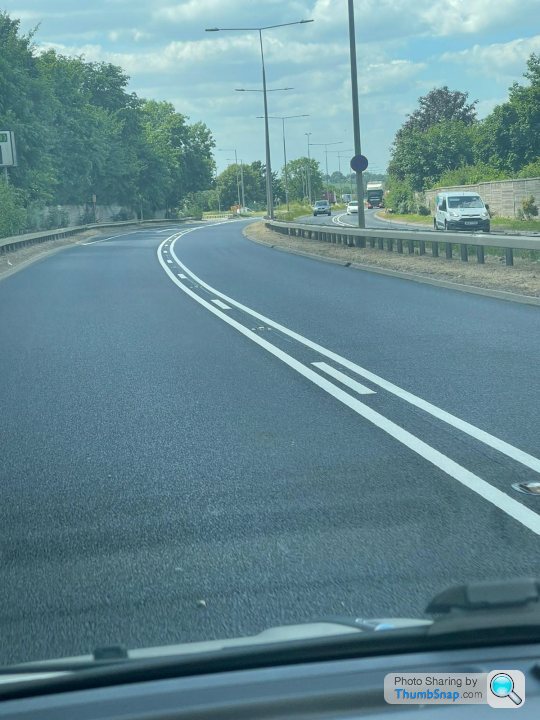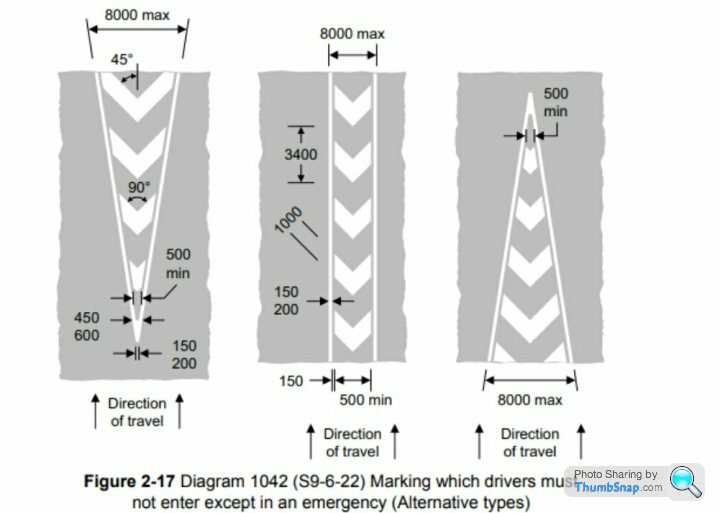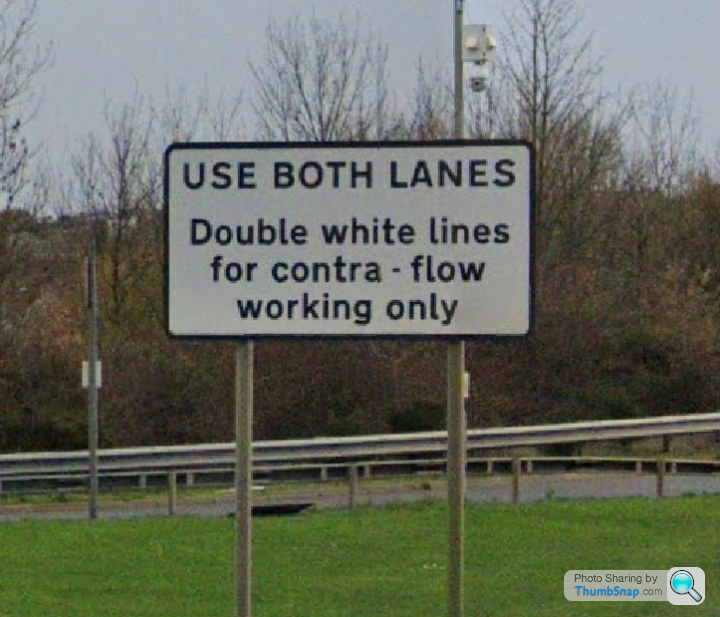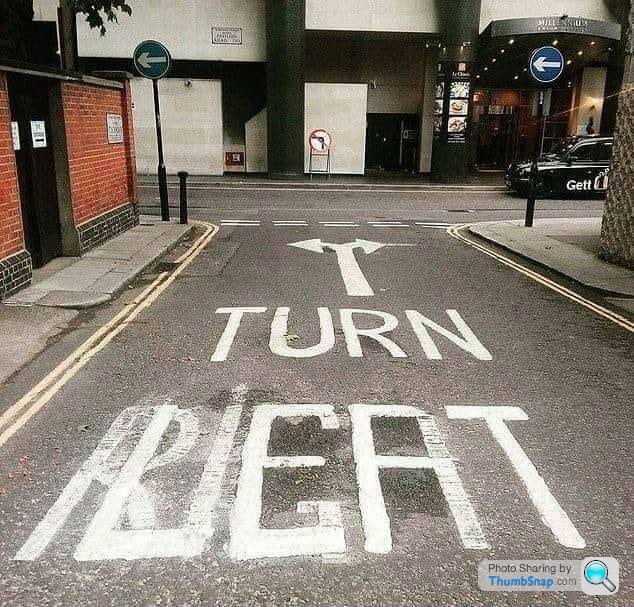Schrodinger's double white line
Discussion

Some new lines pained on the A1014 Stanford le hope - Not quite what I would expect either?
Double white with broken lines in the center, not hatched? I've had a quick peer in the traffic signs manual and can't see anything on it - Given the context of the road I'm thinking something has been cocked up.
To cross or not to cross?

Haltamer said:

Some new lines pained on the A1014 Stanford le hope - Not quite what I would expect either?
Double white with broken lines in the center, not hatched? I've had a quick peer in the traffic signs manual and can't see anything on it - Given the context of the road I'm thinking something has been cocked up.
To cross or not to cross?

You'd think the guys painting white lines on roads would have a pretty good idea about how they should look, given that they must do it on a regular basis
Is it perhaps a section of dual carriageway where they don't want people leaving it until the last minute to take the exit from lane 2, particularly as it is on a corner? And they incorrectly put "dashes" down the middle, that now need to be burnt off? i.e. it should just be solid tramlines for a few hundred meters?
Or does this go on way longer than a single junction?
Or does this go on way longer than a single junction?
Tasmin200 said:
I suspect it's intended to be Dia no. 1042 which has V shaped chevrons in the middle. It doesn't really work in this situation as the solid white lines are very close together so the chevrons are just a line.

I think the application of a chevronned area like that shown would be for application to those areas where there is wider spacing between the solid whites, to make it abundantly clear it is not a lane in itself. In this case, there is no such confusion, and as such two solid lines would have sufficed surely? Like what you have within the Dartford Tunnel for example - i.e. no lane changing. 
Mystery solved perhaps - Done some more digging on google maps and found this:

Interesting to see a rather non-standard use - Though I think something may still have been cocked up as they were previously on one-side only:
https://www.google.com/maps/place/A1014,+Stanford-...

Interesting to see a rather non-standard use - Though I think something may still have been cocked up as they were previously on one-side only:
https://www.google.com/maps/place/A1014,+Stanford-...
There are several examples of cocked up road markings around where I live. Lane markings on a roundabout that direct drivers right into the traffic island. They were painted immediately after the roundabout was built and painted out with black paint which has now worn away, leaving them slightly visible.
https://www.google.com/maps/@53.7293991,-2.4924349...
Another example, further up the road, is cross hatchings extending from a traffic light island that just end without coming to a point. There are cross hatchings further on but extending from the opposite side of the centre lines. Where the cross hatchings end was where the road was resurfaced up to. When the line painters painted in new markings, they seemed to follow some new instruction which didn't incorporate the existing ones. They have painted in a little bit more of the existing cross hatchings but didn't taper them to a point in the normal way.
https://www.google.com/maps/@53.7185576,-2.4840331...
My conclusion from this and other examples of botched road markings that I've seen is that the people painting road markings really don't know what they should look like and what the legal requirements are.
I do recall as well diamond shaped lane markings on the M6 around the Midlands, I don't think they lasted long. They were supposed to mark the point at which people should no longer move in for the exit sliproads to avoid last second darts from the overtaking lane to the exit. I've seen images of solid line lane markings on motorways painted for the same reason, even though solid lines shouldn't be used on motorways for that purpose.
https://www.google.com/maps/@53.7293991,-2.4924349...
Another example, further up the road, is cross hatchings extending from a traffic light island that just end without coming to a point. There are cross hatchings further on but extending from the opposite side of the centre lines. Where the cross hatchings end was where the road was resurfaced up to. When the line painters painted in new markings, they seemed to follow some new instruction which didn't incorporate the existing ones. They have painted in a little bit more of the existing cross hatchings but didn't taper them to a point in the normal way.
https://www.google.com/maps/@53.7185576,-2.4840331...
My conclusion from this and other examples of botched road markings that I've seen is that the people painting road markings really don't know what they should look like and what the legal requirements are.
I do recall as well diamond shaped lane markings on the M6 around the Midlands, I don't think they lasted long. They were supposed to mark the point at which people should no longer move in for the exit sliproads to avoid last second darts from the overtaking lane to the exit. I've seen images of solid line lane markings on motorways painted for the same reason, even though solid lines shouldn't be used on motorways for that purpose.
Gassing Station | Advanced Driving | Top of Page | What's New | My Stuff





